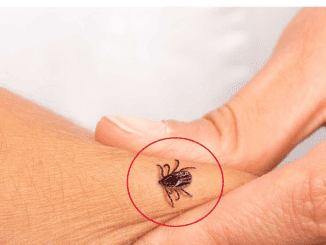This visual puzzle looks simple at first glance. Just count the cubes and figure out the missing number, right? But there’s a twist—most people completely overlook some essential visual tricks hidden in the layout. If you think you’ve got an eye for detail and spatial logic, now’s your time to prove it.
Let’s dive into the challenge and see if you can outsmart what stumps most people.
Why This Puzzle Trips People Up

The majority of people who attempt this puzzle go wrong because they count only what’s visible. It’s easy to assume what you see from the front is the full story—but it isn’t. This is a 3D cube puzzle, and depth matters just as much as what’s right in front of you.
Another reason people miss the correct answer is that they forget how stacking works. If a cube appears higher than the base, there must be support underneath it—even if it’s hidden from view. That hidden cube still counts.
Let’s walk through the logic step by step so we don’t fall for those common mistakes.
Step-by-Step Breakdown of the First Structure (White) – Total: 18 Cubes
Start by observing the layers. There are three.
Each layer forms a 3×2 base—that’s 6 cubes per layer.
So:
3 layers × 6 cubes = 18 total cubes.
Confirmed. The equation checks out.
Step-by-Step Breakdown of the Second Structure (Blue) – Total: 24 Cubes
This structure has the same 3-layer design, but each layer is now larger.
Each layer has a 4×2 arrangement. That’s 8 cubes per layer.
3 layers × 8 cubes = 24 total cubes.
Again, the total is spot on.
Now Comes the Real Challenge: The Third Structure (Peach)
Video: How many cubes? just try it. IQ TEST.
This is where things get tricky. Let’s count each visible cube and think in layers:
Bottom Layer
3 rows × 3 columns = 9 cubes
Second Layer
We see 4 cubes forming a smaller square. But there’s an overhanging cube above that needs support, so we must include a hidden one.
That’s 4 + 1 hidden = 5 cubes
Third Layer
2 cubes are visible here, stacked above.
Top Layer
1 single cube at the top
Add them all up:
Bottom = 9
Second = 5
Third = 2
Top = 1
Total: 9 + 5 + 2 + 1 = 17?
But don’t stop just yet.
Let’s Look Again For Missed Cubes
There’s a tall vertical pillar on the far left with three stacked cubes. That means all three levels must be supported from the bottom. If there are three cubes stacked up, it must have at least 2 beneath it—one of which is hidden behind another cube.
Also, behind the leftmost vertical structure, there’s likely one more cube tucked away providing additional support.
Now adjust the count:
Bottom layer = 9
Second layer = 5 (4 visible + 1 hidden)
Third layer = 2
Additional support cube (hidden) = 1
Top = 1
Now we get: 9 + 5 + 2 + 1 (extra) + 1 = 18?
Still not quite. There’s another tiny hidden cube we often miss—the one supporting a raised middle-level block behind the front row. Add one more.
Final count: 9 (bottom) + 5 (middle) + 2 (above that) + 2 hidden supports + 1 (topmost) = 19 cubes
The Correct Answer: 19
Video : Puzzle. How Many Cubes?
What This Puzzle Really Tests
This isn’t just about eyesight. It’s about how you interpret space. Can you visualize what’s hidden behind the layers? Can you mentally build the structure in your mind? That’s the real test here. It’s like doing mental 3D modeling without software.
Did You Get It Right?
If your first answer wasn’t 19, don’t worry—you’re in good company. Most people stop too soon or forget to include what can’t be seen. That’s the whole point of these brain challenges: to push your mind past the obvious.
Your Turn to Challenge Others
Now that you know the secret, challenge your friends. See if they fall for the trap or if they can crack the code like you just did.
And if you enjoyed this, there are dozens more like it out there waiting to sharpen your brain and give you that satisfying “aha” moment.


